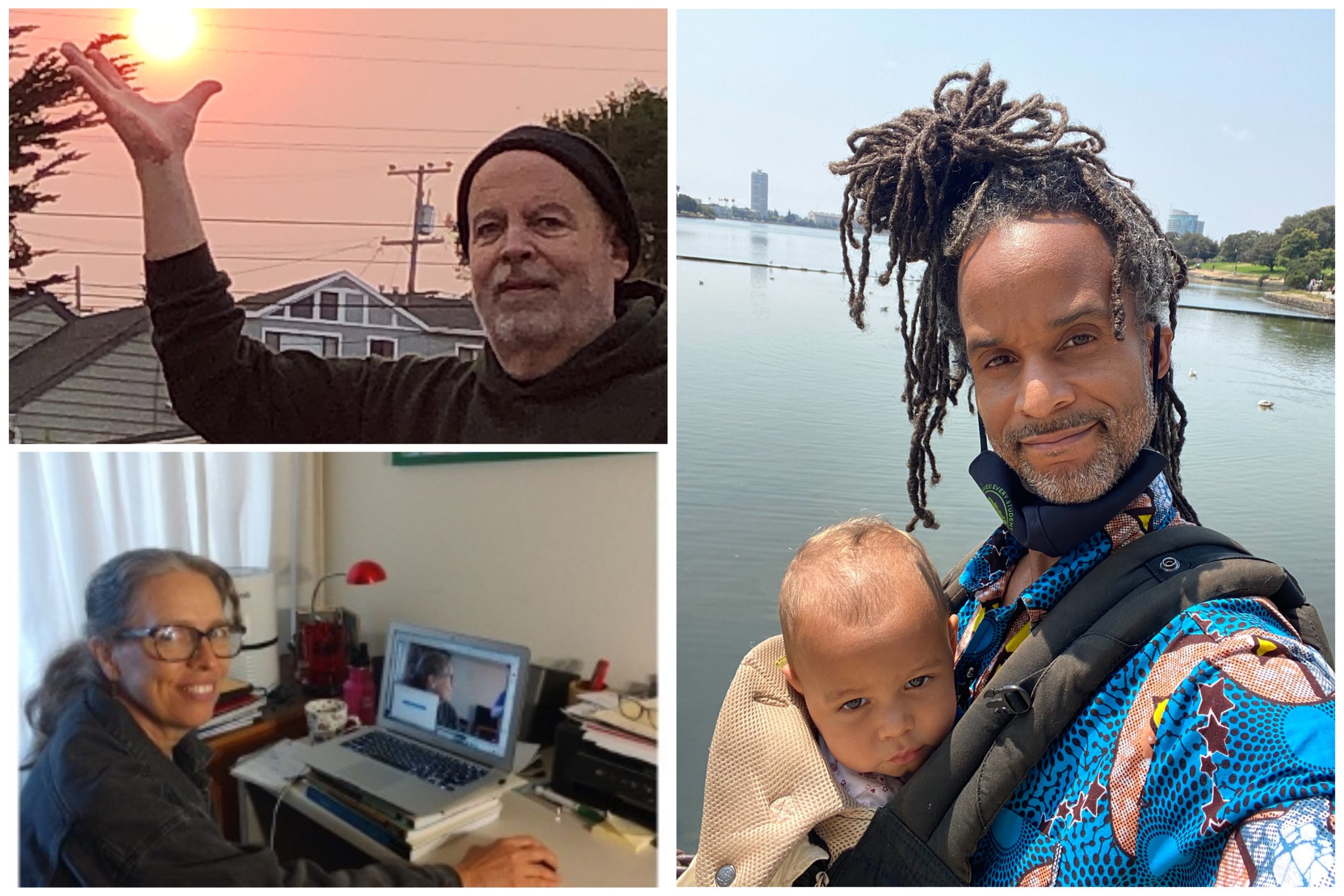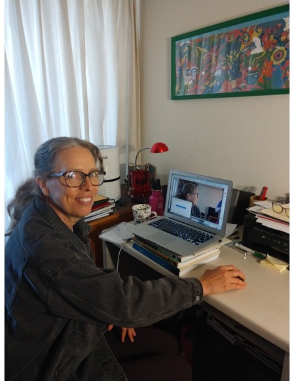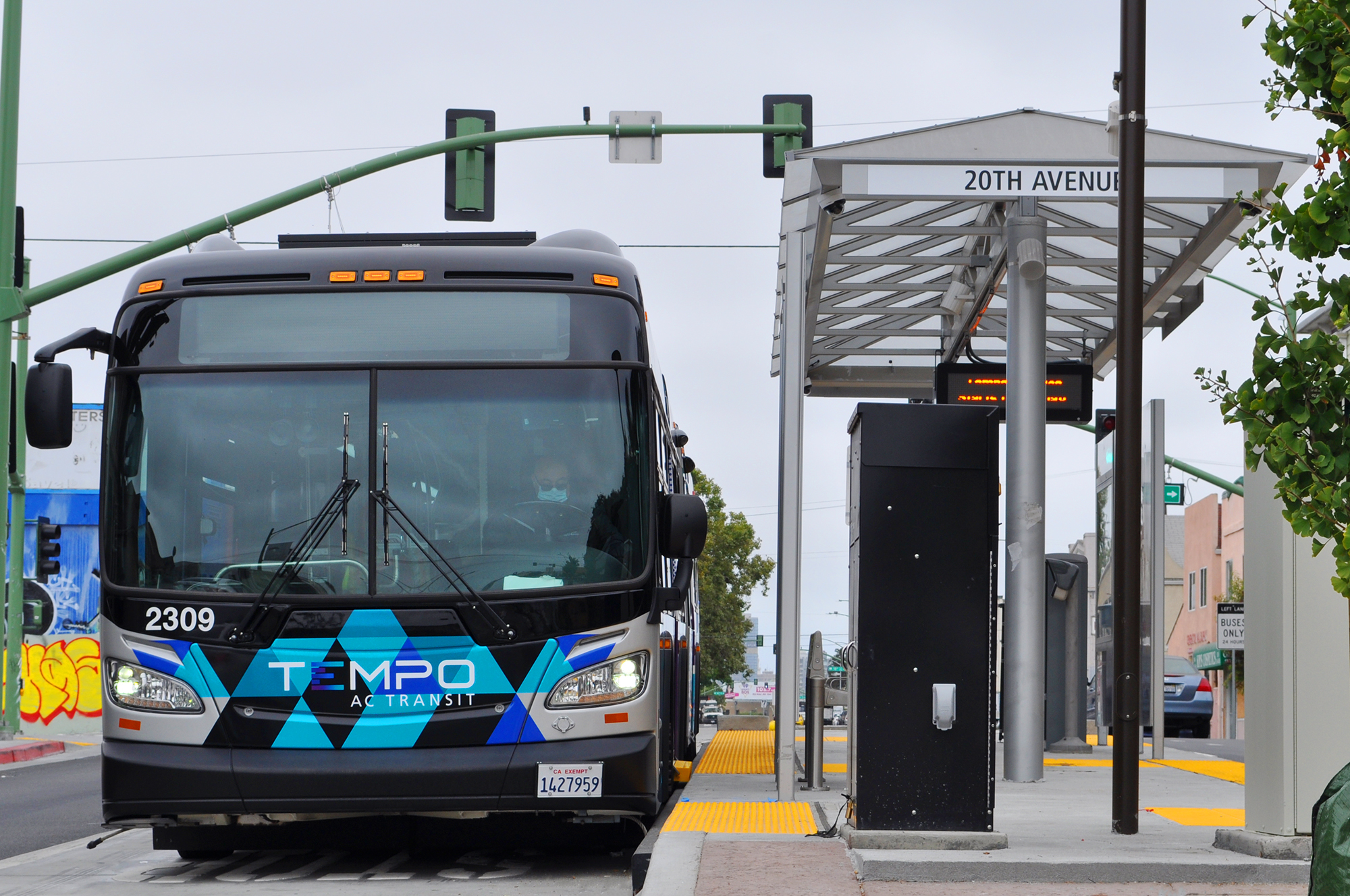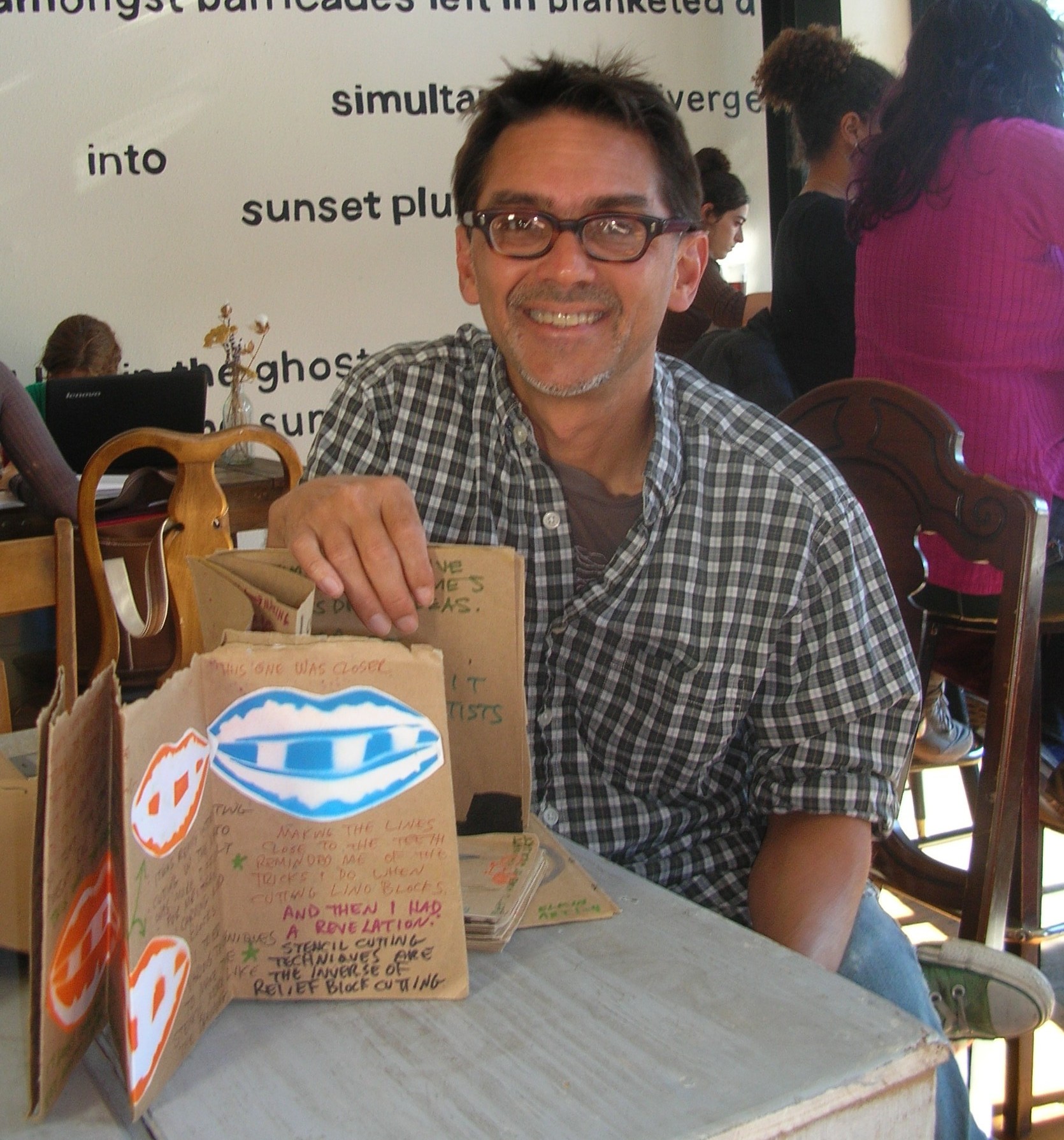
This article is part two of a three-part series sharing OUSD administrator and teacher perspectives to the start of in-person learning, including many lessons learned during 18 months of distance learning during COVID. (Read parts one and three).
As the pandemic started to ramp up early in 2020, teachers in many places were remanded to a virtual environment. In OUSD, the pivot from in-person to online happened mid-March. And, although early on, many students were happy to not have to go to school anymore, that momentary joy wore off as the end of the 2019-2020 school year morphed into summer school and nearly the entire 2020-2021 school year. Schools finally re-opened for the last few weeks of the Spring 2021 semester, and subsequently for summer school. This fall, OUSD schools re-opened in full swing. Oakland Voices chatted with OUSD educators on what they have seen since the return of in-person learning, and what they learned during distance learning.
Six teachers, from kindergarten through high school, share their experiences and perceptions, from classroom to Zoom and back again.
Toussaint Haki Stewart, P.E. Teacher at Dewey Academy Alternative High School

Toussaint Haki Stewart has taught for 19 years, mostly P.E. and plant-based nutrition. He also teaches Career Technical Education (CTE) course in the Health and Fitness pathway and the Planting Justice program.
It’s interesting, this year compared to the years before the pandemic. Attendance is better. I’ve given out a greater percentage of As and Bs. The students who struggled to attend online and just didn’t show up to Zoom and didn’t turn in their work—they have been thriving in person. It’s almost like day and night, like they have just come alive in person. They’re really receiving the curriculum, receiving the opportunity to embrace P.E. as lifestyle medicine. I feel like in person, most of them have thrived.
There are rules around OUSD and COVID, so kids have to adjust to that. We have to wear masks on campus, while we’re walking to class, all day, every day, so that has been kind of tough for kids. I think the pandemic has established cultural norms. Even before they came to school, they expected to be wearing masks and expected to making sure that they’re social distancing. Kids have really shown up and they have really embraced what I’m bringing. It could be that I’m just more familiar with my own style and my own curriculum and how I teach from the perspective of a personal trainer and teaching them how to use fitness as lifestyle medicine and how to use food as medicine so that way they can prevent diseases that are running rampant in our community.
It’s interesting because the kids who are thriving are the ones who never dressed for P.E.; the ones who always cut class, and they’re learning how to use fitness to strengthen their lifestyle so they can better themselves. This is not one size fits all fitness. We’re going to use this gym in a way that they’re going to learn how to create their own fitness program, to support their own goals and so that way they make this a lifestyle for themselves and so they walk out of here empowered.
With information and knowledge, and skills to take care of their bodies, and so a lot of them are really also understanding the mental health benefits of exercise as well.
We also meditate before class every day,and I think that has also been medicine for them. We should encourage and educate.
One of the greatest surprises to come out of this is children’s appreciation for in-person education; they are more receptive. As a teacher, I have been invigorated, because I missed being in the classroom so much. I think it’s taken my teaching to a different level because I appreciate having a face, a body, a young mind in front of me that I can pour into. I need that, that’s my medicine as an educator. You don’t take it for granted, that you see a student in person. Even though I have to wear a mask the whole class, you’re my student, I’m your teacher, and I’m here and you’re here: let’s go!
Loraine Woodard, ELD teacher at Oakland International High School

Loraine Woodard is an English Language Development and reading teacher at Oakland International High School, teaching 9th and 10th graders. She has been teaching for 21 years.
This year, I started the year teaching 100% of my classes outdoors. There are picnic tables in the courtyard we can use. Since they aren’t always available, I put up a tarp, which I take down at the end of the day, to provide shade. Students take their chairs, and we sit in a circle under the tarp. Little by little, we’re doing some activities indoors as well, but I like the flexibility to go back and forth. It not only keeps us more COVID safe, but it also makes class feel a little more free, like summer camp. Since our classes are 90 minutes long, movement is important.
I’m so happy to see kids’ faces, or half of their faces.
Wearing a mask all day is hard, for me and for the kids, but it makes me feel safer which ultimately allows me to relax and teach better. Every once in a while, it hits me that having a group of unvaccinated kids inside together is a risk, but then I get busy and blissfully, momentarily forget about the pandemic.
Teaching in-person is a million times more satisfying than teaching via Zoom. I hope it’s safe enough to continue all year. I think a vaccine mandate will help make rates of COVID decrease so we can stay open.
The benefit is that there is less risk of COVID infection for those who are careful. If students leave home and mix with other people indoors, the idea of being safer goes out the window. This feels like a completely different school year than any other. Our students haven’t been to school for a year and a half. They seem happy.
Many of our students have not returned but some have moved out of the area, some are working, some want to go to a school closer to home. Students report that it takes an hour or two to get to school on public buses, and that they are very crowded and unreliable. They seem to be in need of social interaction and really glad to be back in school. They want to learn English, but also want to socialize. I try to structure classes so they get both and so far, it’s going well.
Some students seem distracted and then I find out they are exhausted because they work long hours outside of school. Sometimes they tell me they slept 2 hours, or 5 hours, and then I understand. We’ve had a lot of absences and the office deals with that. Some have had to quarantine due to a positive test or exposure. We have been asked to make independent study materials available for students who need to quarantine at home.
This is an extremely unique year. We are all just trying to understand each other, adults, and kids, and give each other lots of leeway. We’ve all gone through a horrible pandemic, a sudden jolt that has changed the world and made it more unpredictable. And it’s not over yet, so I feel like we’re just trying to live day-by-day and enjoy the moment.
The district needs to use everything at its disposal to keep COVID out of schools. That means even more safety measures like more testing, vaccine mandates for all staff and students who are eligible, and outdoor dining areas. Also, I wonder if they can negotiate better bus lines with AC Transit to get kids to school more efficiently.
Nestor Gonzalez, Biology teacher at Dewey Academy

Nestor Gonzalez teaches 10th, 11th, and 12th grade science at Dewey Academy, a continuation high school in Oakland. He has taught for 31 years.
The students who have returned to school have been wonderful. They are bright, energetic, and motivated to learn. In distance learning, I was able to teach by lecturing on Zoom and used assignments on Google Classroom to add to lectures. Our Zoom time was moments of relationship-building, explaining the assignments, and a lot of listening to student responses with great patience. It was very difficult to engage students in distance learning and to motivate and inspire them to work and attend class online consistently.
In person, there is the relationship building, in-class assignments and the continual personal interactions between student/teacher and student/student. In relationship building, I carefully study my students to assess their interests, motivation, readiness to engage, and social emotional status. I am at the door when they arrive, and we share “meet and greet” moments. I utilize the scientific notebook as an organization tool, writing platform and strict evidence of work completed. I study each student’s handwriting, neatness, comments and assignment completion as insights to a student’s developmental levels and readiness to proceed.
Daily life in teaching in person is a much richer, deeper and more complex experience for teacher, student and student body. I was extremely exhausted and frustrated with distance learning trying to motivate, inspire, connect, and create an atmosphere of intellectual engagement with my students. Communications became key; texting, emails, to both parents and students, almost 24/7. It was an exhausting continual effort to communicate, inspire and connect with both parents and students. Though successful to some degree, the work was endless.
In our profession, you must be patient, a keen listener and observer. I have broadened and matured to new levels of excellence.
Now, with the experience of COVID distance learning as part of my experience, my pedagogical skills are fine-tuned, understanding of my subject is at a master level and my compassion for the child, the student as a fellow human being is boundless.
My concerns with the return to the classroom was and still is the monster that is COVID: was my district really going to assure our safety, and what would be the state of mind of my students? The reality of working with young people in masks, in close quarters, was and is a challenge. You see young people break the rules as a natural way of existence. COVID is still with us, my district has—thank you OEA and compassionate leaders of the district—provided strict safety protocols, and my students—those that have returned—are ready and hungry to learn and engage.
It is important to note that not all students have returned to Dewey Academy; we are at 50% of capacity. This has been a good thing, smaller classes, and more individual attention to each student. What has been critical and positive has been the smaller class size. As a teacher, I can focus much deeper and understand the needs of each student in all my classes and my intellectual reach and creativity is not watered down, as it would be in full classes.
My advice to OUSD is to begin some scientific investigations into qualitative data, so that we can measure the improvement in our pedagogy and retain these improvements; to continue to work with the OEA to maintain and improve our safety standards related to COVID and beyond; and with the shortage of teachers and early retirements of teachers, use the funds that the State and Federal governments have provided to incentivize teachers such as increases to salary scales and bonuses in Oakland to stay in the profession and to bring in new teachers.
Debora Gordon is a writer, artist, educator and non-violence activist. She has been living in Oakland since 1991, moving here to become a teacher in the Oakland Unified School District. In all of these roles, Debora is interested in developing a life of the mind. “As a mere human living in these simultaneously thrilling and troubled times,” Debora says, “I try to tread lightly, live thoughtfully, teach peace, and not take myself too seriously.”




2 Trackbacks / Pingbacks